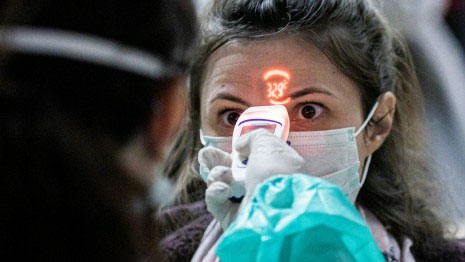RESEARCH suggests that the best
strategy for minimizing the toll of
the new coronavirus involves widespread and extended social distancing.
Research from the Imperial College London (ICL), in the United Kingdom, has predicted the likely effects on mortality of two different ways of responding to the COVID-19 pandemic.
The findings, which are directly informing U.K. policy, suggest that in the U.K. and United States, a policy of suppressing the outbreak, rather than mitigating it, would significantly reduce demand for critical care beds and the number of people who would die.
Prof. Neil Ferguson, Director of the Abdul Latif Jameel Institute for Disease and Emergency Analytics, at ICL, is the first and corresponding author of the new study.
According to the World Health Organization (WHO), coronaviruses initially transmit from animals to humans. The coronavirus at the center of the current global pandemic has been called SARS-CoV-2. Previous coronaviruses include MERS-CoV, which emerged in 2012 and causes Middle East respiratory syndrome, and SARS-CoV, which emerged in 2003 and causes severe acute respiratory syndrome.
Although much is still unknown about the virus, the medical community believes that it spreads when a person with the condition coughs or sneezes particles that carry the virus into the air. The virus may also transmit from surfaces to people through touch.
Mitigation or suppression
Different governments have responded in different ways to the COVID-19 pandemic, placing varying restrictions on the movement of people within countries or entering countries.
The U.K. government began with a policy of mitigation, aiming to protect the people most vulnerable to COVID-19: people over the age of 70 and people with underlying health conditions, including anyone who receives seasonal flu vaccines.
This initial policy did not involve significant restrictions on the movement of the general population. The government hoped that this would slow the outbreak enough that health systems could still function and enough of the general population would achieve some level of immunity, limiting any repeated rise in infection once measures were finally relaxed.
However, the research published by the ICL team has significantly changed the U.K. government’s approach — which now focuses on the suppression of the virus, advising social distancing for the general population and social isolation for those who have, or who live with someone who has, COVID-19.










